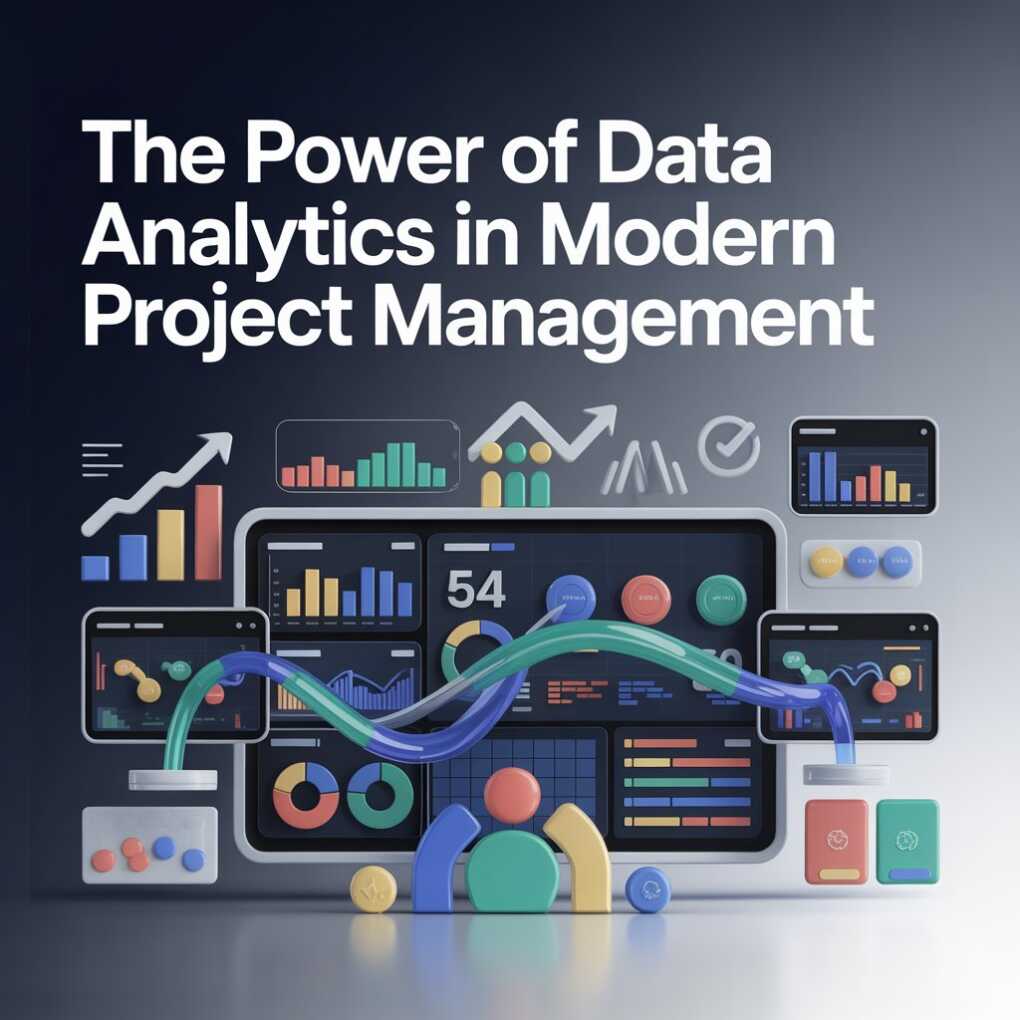In today’s rapidly paced international commercial enterprise, every selection counts. Modern undertaking management is no longer about guesswork or intuition—it’s about making smart, data-driven selections that ensure accuracy, performance, and transparency. As companies tackle larger, more complicated projects, information analytics has emerged as the key to unlocking productivity and improving outcomes across every stage of the task lifecycle.

The Rise of Data-Driven Project Management
Not long ago, venture managers relied closely on experience, intuition, and manual reporting to manage their teams. While experience nonetheless performs an essential position, the virtual transformation of industries has modified the game Today’s leaders have get right of entry to to advanced analytical equipment which could screen progress, tune fees, and expect consequences with super precision. This evolution has grown to become project control into a technology of statistical interpretation and strategic decision-making.
Organizations now gather giant amounts of records from exceptional mission levels—making plans, budgeting, procurement, and execution. The potential to research these facts in real time gives managers the readability they want to make quicker, more assured decisions. From predicting capacity bottlenecks to figuring out value-saving possibilities, analytics allows groups to transform information into actionable insights.
Data Analytics in Modern Project Management
To apprehend the proper ability of analytics, it’s crucial to look at the way it works within challenge management. Data analytics permits assignment managers to investigate overall performance developments, examine group productivity, and foresee challenges earlier than they become issues. It combines descriptive analytics (what passed off), diagnostic analytics (why it came about), predictive analytics (what should show up), and prescriptive analytics (what needs to be carried out). For example, the task dashboard visualizes big volumes of information in a simple, person-friendly format. Managers can right away see whether or not projects are heading in the right direction or if changes are needed. The energy procurement industry is a great instance of how fact analytics has made a significant impact—supporting groups monitor fluctuating electricity prices, forecast demand, and optimize aid usage to ensure certain efficiency and sustainability. By the use of analytics, organizations benefit from higher management over each inner and external variable, enabling them to make choices that are not simply reactive but proactive.
Enhancing Efficiency Through Advanced Analytical Tools
Modern analytics systems have reshaped how businesses deal with mission management. They accumulate and mine facts from multiple sources—economic reviews, schedules, budgets, and communique logs—and transform them into clear insights. These insights enable higher planning, forecasting, and risk mitigation. Integrating superior gear with Supply chain consulting offerings can elevate challenge control performance to the next level. Through information analysis, those offerings assist businesses in streamlining procurement, logistics, and distribution methods while retaining visibility throughout the entire delivery chain. By identifying inefficiencies early, corporations can allocate resources more efficiently, lessen waste, and ensure that projects stay within scope and finances.
Ultimately, analytics-driven systems help leaders in turning raw statistics into clever steerage—making sure that each choice allows long-term success.
Data Analytics and Smarter Decision-Making
In modern-day hard environments, choices frequently need to be made quickly. Waiting weeks or months for reports is no longer an option. Data analytics gives real-time insights that permit undertaking managers to respond immediately to emerging trends or challenges.
With real-time fact dashboards, managers can perceive early signs of venture delays, over-budgeting, or resource shortages. Predictive modeling goes a step further—the usage of historic statistics to forecast destiny performance.
This empowers groups to modify their strategies before issues occur.
For example, analytics can screen that a challenge’s material charges are rising more quickly than expected. With this understanding, managers can renegotiate contracts, seek opportunity suppliers, or adjust undertaking designs before the prices spiral out of control.
Improving Collaboration and Transparency
Data analytics doesn’t simply decorate performance—it also strengthens communication amongst project stakeholders. Teams throughout departments, places, or even time zones can share insights from centralized dashboards. Everyone sees the same numbers, reports, and traits, minimizing confusion and enhancing collaboration. Transparency builds agreement. When statistics are shared openly, stakeholders—from investors to crew members—gain a clearer knowledge of progress and demanding situations. These collaborative surroundings guarantee that decisions are made together, primarily based on information in the vicinity of assumptions.
Furthermore, analytics permits organizations to measure the degree of team productivity and assess how successfully unique departments work together. The result? Stronger alignment, higher duty, and an extra engaged group of workers—all of that is essential to modern mission achievement.
Risk Management Performance Optimization
Every assignment includes risks, whether or not they are monetary, operational, or logistical. Traditionally, chance control depended heavily on experience and instinct. Today, statistical analytics allows companies to become aware of, assess, and mitigate dangers long before they become a problem. By studying historic statistics, mission managers can discover styles that predict capability failures. For example, if a particular supplier has continually delayed deliveries, analytics will flag it before the following project segment starts. This proactive technique minimizes disruptions and helps keep undertaking momentum up.
Incorporating analytical insights from FF&E procurement services allows managers to anticipate fluctuations in fabric availability, transportation expenses, and delivery timelines. This foresight allows the creation of realistic schedules and budgets, mainly to progress general performance and patron delight.
Data-driven chance control moreover enhances exquisite manipulation. By constantly tracking ordinary performance metrics, groups can pinpoint susceptible areas and take corrective measures in real time—making sure tasks are aligned with their desires.
Measuring Success Through Meaningful Metrics
Success in mission management isn’t pretty much completing obligations—it’s approximately achieving results that align with commercial enterprise targets. Data analytics affords measurable benchmarks, including return on investment (ROI), performance ratios, fee variance, and resource usage. By constantly monitoring those indicators, mission managers can determine what techniques supply the exceptional consequences. This creates a cycle of non-stop improvement in which each task will become an opportunity to study, refine, and innovate.
Analytics additionally facilitates companies keeping transparency with clients through offering clean, statistics-backed reviews on development and overall performance. It not only builds self-belief but also fosters long-term partnerships grounded in consideration and responsibility.
The Future of Data-Driven Project Management
The future of task control is undeniably records-driven. Emerging technology like artificial intelligence (AI) and machine learning (ML) will further enhance predictive analytics, automation, and reporting skills. AI will allow structures to analyze past venture data and propose the most beneficial paths ahead. Machine learning models will come across trends humans would possibly overlook, enhancing decision-making accuracy and efficiency.
As statistics literacy becomes an important talent for task managers, businesses that include analytics these days could have a sizable competitive benefit tomorrow. They’ll be able to supply faster, more efficient, and more dependable outcomes—positioning themselves as leaders in their industries.
Conclusion: Turning Insights into Action
In the modern enterprise landscape, statistics is more than just numbers—it’s a source of truth that drives smarter decisions, minimizes dangers, and enhances results. By integrating analytics into each degree of assignment management, agencies can transform the manner in which they plan, execute, and supply results. Data analytics doesn’t simply help initiatives run smoothly—it ensures they thrive. As industries keep evolving, folks who harness the energy of statistics will lead the way towards extra innovation, performance, and long-term success.
